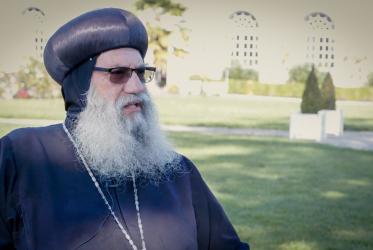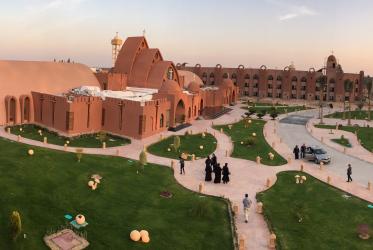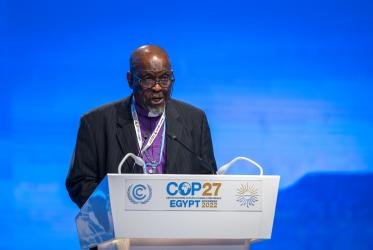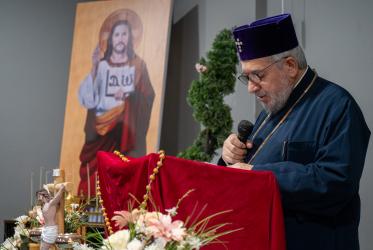Greek Orthodox Patriarchate of Alexandria and All Africa
The Greek Orthodox Patriarchate of Alexandria and All Africa is the second ranking Orthodox See (after the Ecumenical Patriarchate of Constantinople). It is in communion with all the (Eastern) Orthodox churches in the world and belongs to the One, Holy, Catholic and Apostolic Church. The Patriarchate of Alexandria extends its ecclesiastical jurisdiction to all the countries of the African continent. Christianity made its way to Alexandria at a very early date, via the Jews of the Diaspora. However, it is St Mark the Evangelist who is regarded both by tradition and in the light of various written sources as the founder of the church in Egypt and, indeed, throughout the continent of Africa. St Mark arrived in Egypt in 43 AD and met a martyr's death on his second visit to Alexandria. Already in its very first years the church of Alexandria expanded its activities to cover not only Egypt and Libya, but also the sub-Saharan countries of Africa. The history of the church can be divided into the following periods: from its foundation to the First Ecumenical Council in 325; from 325 to the Arab conquest of Egypt in 642; from 642 to 1517 when Egypt came under the sway of the Ottoman Turks; from the Turkish conquest to the liberation of Greece from the Turkish yoke in 1821; from 1821 to the present day. All the way through the first centuries of the life of the Church of Alexandria, persecution and heresy were twin threats, but the church rose to the occasion and never lost its courage. The entire period of Arab rule was also a prolonged torment for the Christians of Egypt. The Patriarchate of Alexandria was more than once in danger of complete extinction as a result of the cruel measures taken by the rulers of Egypt. When the Turks took Egypt in 1517, a new era dawned for the Christians. Persecution ceased. The patriarch received from the sultan a firman safeguarding all the patriarchal privileges and guaranteeing that the patriarchate would be allowed to perform its duties in peace. The 19th century could most aptly be described as the period in which the church experienced a renaissance. The spiritual regeneration reached completion during the 20th century.
Among the most important milestones in the early history of the Church of Alexandria are the appearance of monasticism in Egypt, the creation of the famous School of Alexandria, and the emergence of a distinct Christian community among the Egyptians, separate from the Greeks. Since the 4th Ecumenical Council in 451 the Coptic Orthodox Church and the Greek Orthodox Patriarchate of Alexandria and All Africa have been separate churches.
In the course of the 20th century the Patriarchate of Alexandria developed a remarkable missionary activity on the African continent, with the assistance of the Orthodox churches of Cyprus and Greece. Whereas in the past the church mainly served the Greek expatriate communities throughout Africa, it was now reaching out to the local people. Kenya, Ghana and South Africa were countries where African Orthodox communities were established and granted recognition, and from where the mission spread to other countries like Uganda, Nigeria, Zimbabwe, the DRC, etc. In 1981 the Orthodox Patriarchal Theological School was opened in Nairobi, Kenya. It plays a crucial role in the formation of African clergy. The church is striving to be a truly African Orthodox Church, struggling to find ways and means to support itself and to build upon the foundations of the origi¬nal work of the Apostle Mark, Evangelist of Africa.





